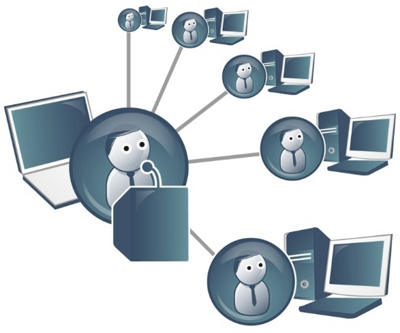L ast semester we took the bold step of doing away with the physical classroom and conducting all classes virtually via Zoom. As a brief refresher, for years we mixed physical and virtual, and in a nutshell, students stop coming to physical class. So we removed it as an option. We still have class each evening at 5:30pm Central Time, but one attends class via Zoom (we’ve had lots of different virtual platforms over the years – I really like Zoom).
ast semester we took the bold step of doing away with the physical classroom and conducting all classes virtually via Zoom. As a brief refresher, for years we mixed physical and virtual, and in a nutshell, students stop coming to physical class. So we removed it as an option. We still have class each evening at 5:30pm Central Time, but one attends class via Zoom (we’ve had lots of different virtual platforms over the years – I really like Zoom).
The plusses:
- Aligning with the emerging marketplace: My sense of our student body is that we need to provide convenience and flexibility and that by plunging full-bore into virtual, we will learn new ways to better meet those student needs.
- More “equal” experience: Try as I might, the in-class students tended to dominate the class discussion. Now, with everybody on the same playing field, virtual students can’t rely on physical students to carry the load.
- Fewer technical issues: in my experience, 90+% of the technical issues of the physical/virtual classroom had to do with the interface between the two. The room-based microphone wouldn’t pick up the soft-spoken students….things like that. When everyone is virtual, technical issues drop.
- Redeployment of GAs: We typically had a GA (Grad Asst) in the classroom to “drive” the interface between the classroom and the online folks. This ate up almost half of their hours, so now these can be used for other purposes.
The minuses:
- Lingering bias against virtual/online. Amazing that there is still some stigma about virtual/online learning. I still must patiently explain that we teach EXACTLY the same material we’ve taught before, except now that instead of some people in the class and some virtual via Zoom, they are now all virtual via Zoom. There is no difference whatsoever in what it taught as a result of this format switch. There is some tweaking in how we teach, but not in the content itself. None!
- Some of this comes for inquiring prospective students. I think it is a very reasonable question to ask, and for the vast majority, they get it and are fine.
- The most distressing case involves a certain unnamed country — purporting to be future-oriented – who is refusing to recognize our program because they don’t believe in virtual/online. Despite several explanations of the distinction between online and virtual, they still have not caught on. I will keep trying, but I can’t help notice the irony of a country striving to be a leader in foresight rejecting online learning. Fascinating and distressing at the same time.
- Visa issues. Because we are virtual, we cannot enable international students to get a visa. We lose some students who want to come to the US.
- Loss of community. The tradeoff with providing more convenience to individuals is the loss of the community-building that is much easier to build f2f. There is less opportunity for serendipitous meetings, or hanging out after class that used to take place when we were fully virtual.
On balance, I am happy with how it’s been going. In the short-term, I really would like to create a category/classification of virtual class. Right now we have f2f, online, and hybrid as the three types of classes. What we are doing is none of the above. Online suggests there is no regular class meeting; hybrid means there is a mix of online and f2f. Virtual to me is a new category in that there is a regular meeting but it is online! In the long-term, I would like to see how we can do more community building. — Andy Hines
Andy,
You may (or may not) remember me, we met several times at WFS conferences maybe fifteen years ago. An associate and I wrote a book and spoke on Virtual Teaming. We had experience leading cross-functional “remote” teams. The thing that made the team members “virtual” (in our definition) was that they did not report to us, or even to the same managers. This of course makes our team members a lot like your students, who come to you to lead them for a certain purpose and certain amount of work, but not all their purposes or all their workload.
We found, like you have, that there is a loss of serendipity with a fully virtual team. Our fix to this problem was two fold. The first was to use the time while people log on for casual personal talk (to establish rapport) and to leave the chat open after the meeting for people to follow-up, drill down, or discuss different topics. This was often just used to schedule smaller group meeting but occasionally turned into a long discussion. The second fix was to explicitly schedule, and facilitate, open discussion time, just as we scheduled explicit team building activities as part of our process. This was most effective in conjunction will a regular meeting (e.g. half tine for the reg meeting, half for open discussion)
If you would like to discuss or would like a copy of our book let me know
I was just looking at the list of students who have inquired about the program recently, and what country they come from.
Australia
South Africa
US
Rome, Italy
Iran
South Africa
Singapore
Pakistan
Hmmmm, a trend developing here>